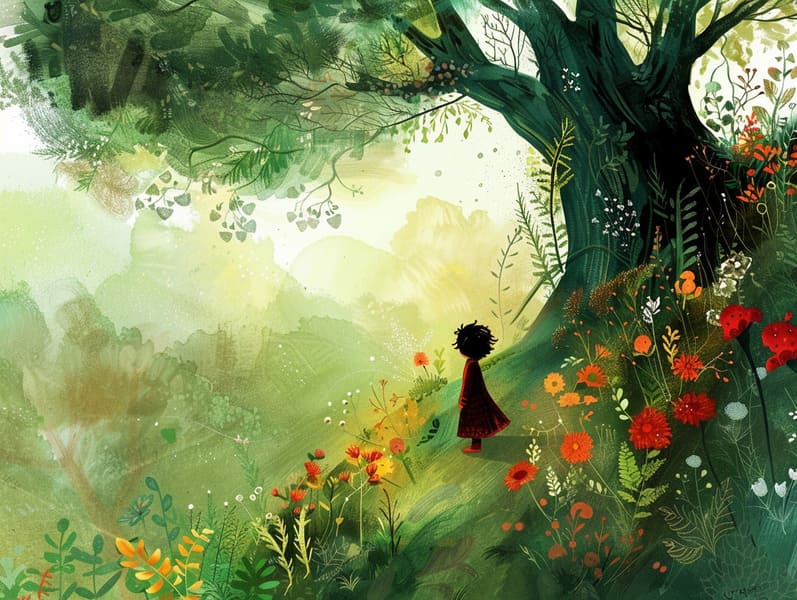The Journey of Fairy Tales and Their Endless Captivation.
The Journey of Fairy Tales and Their Endless Captivation.
Blog Article

Fairy tales have legendary status. These tales have been conveyed from one generation to the next centuries before they were ever inscribed. They arose from a variety of cultures, including Middle Eastern traditions. They were initially disseminated among mature audiences, often carrying themes and messages pertaining to the societal norms and beliefs of the time.
The renowned Brothers Grimm, Jacob and Wilhelm, were among the first to gather many of these beloved stories. Their published works, "Grimm's Fairy Stories," included stories like "The Story of Cinderella," "The Bread Crumb Trail," and "Little Snow White," which have since become cornerstones in the world of children's fairy tales. Similarly, H. C. Andersen's fanciful tales, such as "The Sea Maid," and "The Story of the Ugly Duckling," have touched hearts worldwide, establishing their place in the pantheon of classic fairy tales.
Despite their ancient origins, these stories remain as pertinent as ever, especially as kids' bedtime tales. These magical stories are now available in diverse formats, including richly illustrated books, whimsical animations, and internet fairy tales.
Their continued relevance can be attributed to several delightful features:
Important Morals: Traditional fairy tales often illustrate important moral lessons. Tales like "The Boy Who Cried Wolf" teach the benefit of integrity, while "The Hare and the Tortoise" emphasize the qualities of tenacity and meekness. These narratives offer young ones clear distinctions between right and wrong, developing their moral compass in a tender yet important way.
Warmth and Understanding: Traditional fairy tales frequently involve beings facing trials and tribulations, inciting young readers to feel with their struggles and celebrate their triumphs. For instance, "The Story of Beauty and the Beast" emphasizes the benefit of looking deeper to perceive the true character of a character, strengthening insight and knowledge.
Cultural Recognition: Many traditional fairy tales are infused with the cultural contexts from which they originated. Understanding these narratives can provide intriguing perspectives into different cultures, enhancing a sense of global respect and acknowledgment.
Fantasy and Imagination: The fantasy-filled elements in old fairy tales—magical kingdoms—activate children’s visions. These stories guide readers to fantastical realms, activating innovative ideas and a sense of enchantment that lasts a lifetime.
Old fairy tales are not only delightful but also informative. They serve as enchanted tools in nurturing various cognitive and emotional skills in little ones. When ancient fairy tales are recited, they enhance linguistic abilities by bringing new terms and detailed sentence structures. This practice also promotes listening abilities and concentration, as kids remain attentive, eager to see what happens next.
Furthermore, discussing the themes and characters of ancient fairy tales can advance analytical skills and logical thinking. Young readers are instructed to find patterns, foresee events, and know cause and effect. These explorations also further kids convey their thoughts and feelings, nurturing their emotional intelligence.
In today’s cyber age, the accessibility of digital storybooks has made these tales more reachable than ever. Web-based platforms and online apps extend huge assortments of traditional fairy tales that can be read or listened through anytime, anywhere. Fairy tales read out loud are particularly widespread, sharing an delightful method for young readers to immerse in these spellbinding stories. Audio stories and read-to-me videos move characters popular fairy tales with morals and settings to life, often accompanied by enchanting music and instrumentals that boost the narrative experience.
The unfading fascination of traditional fairy tales lies in their ability to adapt to current times while staying true to their basic principles. Contemporary reimaginings of these stories often introduce more representative characters and modern settings, making them understandable to today’s audience. However, the underlying themes of fortitude, benevolence, and rightness remain unchanged, continuing to move listeners of all ages.
Classic fairy tales also offer a sense of serenity and knowability. They render accessible a well-ordered narrative with a evident beginning, middle, and end, often coming to a close with the ending of conflicts and the triumph of virtue over corruption. This consistency can be relieving for the young, offering a sense of invariability in an unpredictable world.
Traditional fairy tales continue to bewitch and train new generations, maintaining their appeal and applicability in modern society. As nighttime stories for kids, they share a perfect blend of enchantment and education, sustaining moral values, empathy, and creativity. The abundance of online fairy tales and the widespread nature of fairy tales read aloud certify that these classic narratives remain obtainable to new generations.
By continuing and telling these fairy tales, we continue to recognize the rich tapestry of mythology and cultural heritage. Whether you are experiencing a colorful picture book, enjoying a virtual collection, or listening to an spoken story, the fascination of bedtime fairy tales is always within reach. These fairy tales remind us of the consistent strength of narratives and its ability to gather us across centuries and lands.
Be it you are reading a colorful picture book, experiencing a virtual library, or playing an narrated book, the fascination of timeless fairy tales is always within reach.
These tales teach us of the invariable nature of storytelling and its ability to link us across generations and cultures, establishing a link that enchants and educates alike.